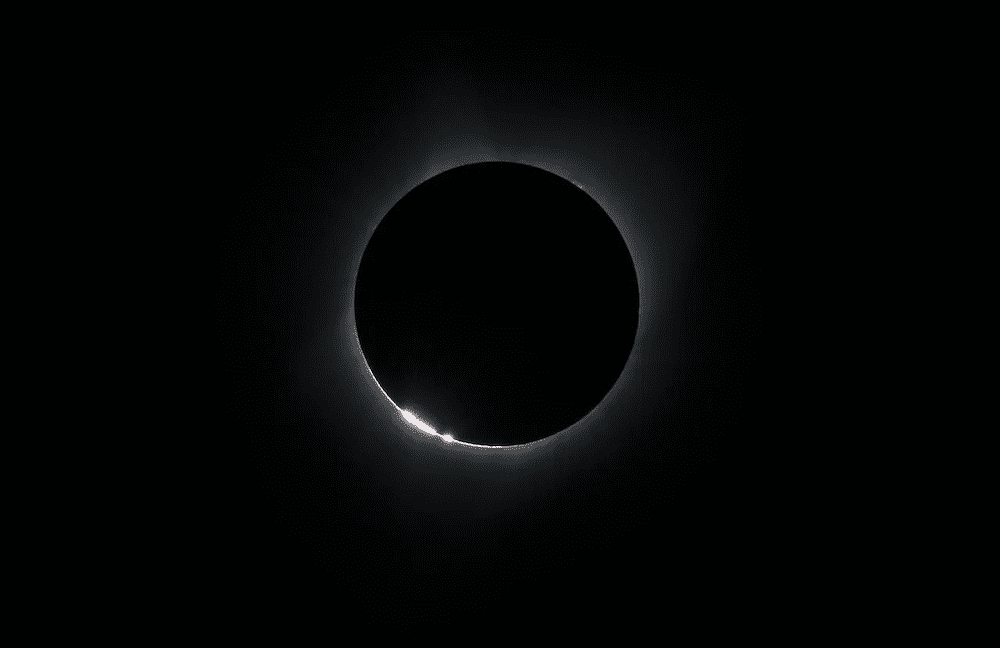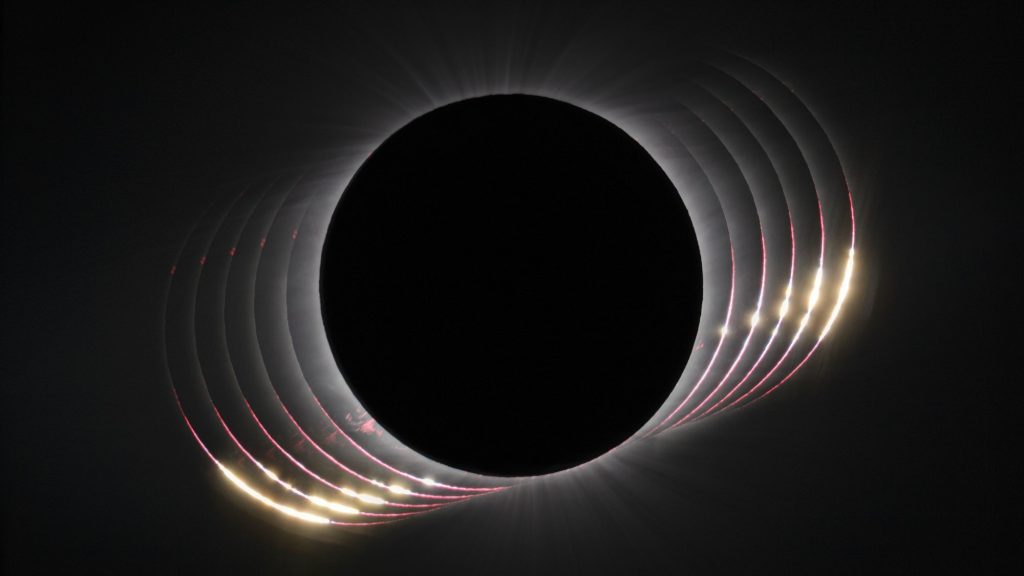Listening for crickets isn’t the only way you can help NASA conduct research during the total solar eclipse passing across much of North America on April 8—you can also lend your smartphone camera to the cause. The agency is calling on anyone within the upcoming eclipse’s path to totality to participate in its SunSketcher program. The program will gather volunteer researcher data to better understand the star’s shape. To participate, all you need is NASA’s free app, which uses a smartphone’s camera coupled with its GPS coordinates to record the eclipse. But why?
The sun looks simply spherical in many photographs and renderings, and in the sun if you happen to briefly glance at it during the day—an emphasis on “briefly,” of course. But thanks to what’s known as oblateness, this isn’t ever really the case. A rotating spheroid will oblate when its centrifugal force generates enough inertia to slightly flatten it out into a more irregular, elliptical shape. Within the solar system, Earth, Jupiter, and Saturn all also display oblateness, but the sun has some unique characteristics affecting how it oblates in particular.

According to NASA, the sun’s oblateness “depends upon the interior structure of the rotation, which we know from sunspot motions to be latitude-dependent at least.” Astronomers also think gas flows accompanying the sun’s magnetic activity and convection can create “transient distortions at a smaller level.” The upcoming total solar eclipse will provide astronomers an opportunity to better understand all this in the sun, but to make that happen, NASA wants you to harness the moon.
Earth’s natural satellite can serve as a valuable research partner in measuring the sun’s oblateness. This is due to a phenomenon known as “Baily’s beads,” which are the tiny flashes of light during an eclipse that occur as solar light passes over the moon’s rugged terrain of craters, hills, and valleys. Since satellite imagery has helped produce extremely detailed mappings of lunar topography, experts can match Baily’s beads to the moon’s features as it passes in front of the sun.
[Related: NASA wants you to record crickets during April’s solar eclipse.]
These flashes will vary depending on where an observer is located within the path of totality. If you could amass data from a vast number of observer locales, however, you could better understand the sun’s surface variations due to its oblateness. And there are potentially millions of individual locales directly underneath the April 8 eclipse. Enter: SunSketcher.
“With your help, we hope to create a massive hour-long database of observations, more than we could ever make on our own,” NASA says.
All volunteers need to do is angle their phones up to capture the big event and let SunSketcher record the rest. Once all those videos are collected, NASA says the solar disk’s size and shape can be calculated to within a few kilometers, “an accuracy that is far better than currently known.” The reliable, detailed information on solar oblateness captured during SunSketcher can also be used to study how solar gravity affects the motions of inner planets, as well as help test various gravitational theories.
It’s important to mention that being a official SunSketcher volunteer means you won't be able to use your smartphone to take videos or photos for yourself, but that's probably a small price to pay for contributing to important scientific research.









